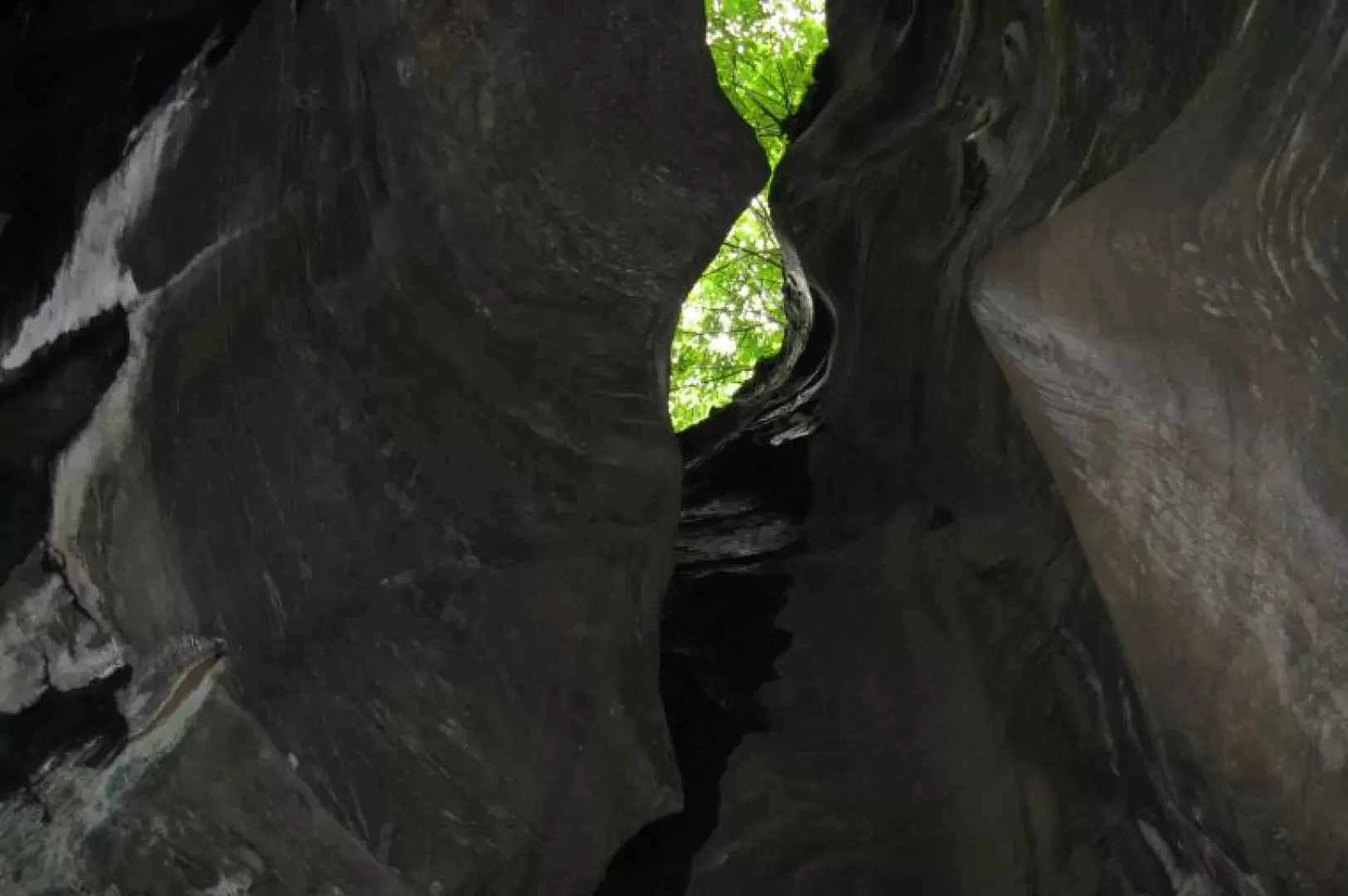Uriezzo Gorge

Introduction
The Orridi are characterised by a series of large sub-circular cavities separated by narrow, winding tunnels. The walls are sculpted by niches and volutes produced by the violent motion of water. The rocky bottom is not always visible as it is masked by alluvial material and a layer of topsoil. The gorges constitute a complex ecosystem: constant conditions of high humidity, low light, smooth and polished walls, determine difficult environmental conditions to which mosses and ferns, present in great variety and species, are particularly adapted.
Description
The large circular cavities (cauldrons) connected by narrow passages have been the subject of various studies and the formulation of different theories. The most accredited and secure one considers the intense action of the subglacial waters of the Toce glacier, which must have been very abundant in these areas. With the retreat of the glaciers, the course of the hydrographic network would have changed, and the deep gorges produced by the erosion of the torrents remained dry, allowing the exploration of their interior. The most spectacular gorge is the Orrido di Uriezzo Sud, called the 'Tomba di Uriezzo' by the locals. It consists of a series of potholes set on two levels and separated by a rock jump some ten metres high, which can be overcome by means of an iron ladder. The length of the two formations is about 200 m; the depth is about 20-30 m; their direction is SSE-NNW and the formation called Orrido Ovest is its presumed natural continuation. At the entrance to the Gorge, explanatory panels guide the tour.